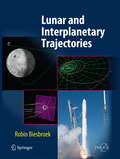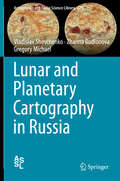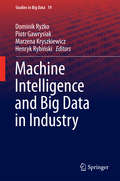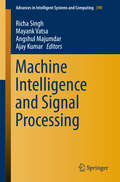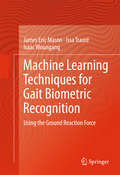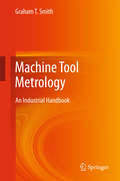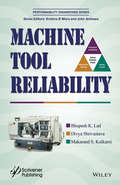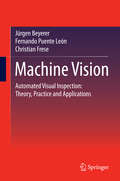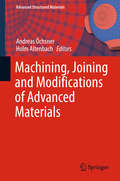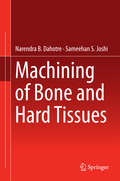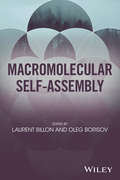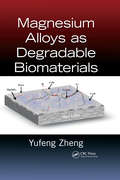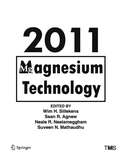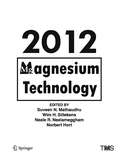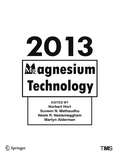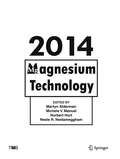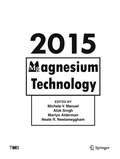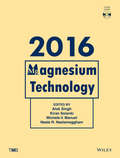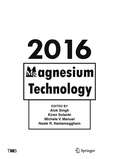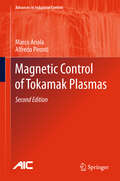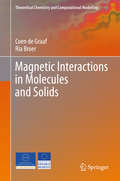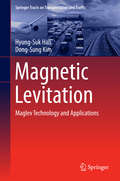- Table View
- List View
Lunar and Interplanetary Trajectories (Springer Praxis Books)
by Robin BiesbroekThis book provides readers with a clear description of the types of lunar and interplanetary trajectories, and how they influence satellite-system design. The description follows an engineering rather than a mathematical approach and includes many examples of lunar trajectories, based on real missions. It helps readers gain an understanding of the driving subsystems of interplanetary and lunar satellites. The tables and graphs showing features of trajectories make the book easy to understand.
Lunar and Planetary Cartography in Russia (Astrophysics and Space Science Library #425)
by Vladislav Shevchenko Zhanna Rodionova Gregory MichaelThis book is the first to document in depth the history of lunar and planetary cartography in Russia. The first map of the far side of the Moon was made with the participation of Lomonosov Moscow University (Sternberg Astronomical Institute, MSU) in 1960. The developed mapping technologies were then used in preparing the “Complete Map of the Moon” in 1967 as well as other maps and globes. Over the years, various maps of Mars have emerged from the special course “Mapping of extraterrestrial objects” in the MSU Geography Department, including the hypsometric map of Mars at a scale of 1:26,000,000, compiled by J.A. Ilyukhina and published in 2004 in an edition of 5,000 copies. A more detailed version of this map has since been produced with a new hypsometric scale. In addition, maps of the northern and southern hemispheres of Mars have been compiled for the hypsometric globe of Mars. Relief maps of Venus were made in 2008, 2010, and 2011, and hypsometric maps of Phobos and Deimos at a scale of 1:60,000 were published in 2011. History of Lunar and Planetary Cartography in Russia provides detailed information on the compilation of this diverse range of maps and will be of interest to all lunar and planetary cartographers.
Machine Intelligence and Big Data in Industry (Studies in Big Data #19)
by Dominik Ryżko Piotr Gawrysiak Marzena Kryszkiewicz Henryk RybińskiThis book presents valuable contributions devoted to practical applications of Machine Intelligence and Big Data in various branches of the industry. All the contributions are extended versions of presentations delivered at the Industrial Session the 6th International Conference on Pattern Recognition and Machine Intelligence (PREMI 2015) held in Warsaw, Poland at June 30- July 3, 2015, which passed through a rigorous reviewing process. The contributions address real world problems and show innovative solutions used to solve them. This volume will serve as a bridge between researchers and practitioners, as well as between different industry branches, which can benefit from sharing ideas and results.
Machine Intelligence and Signal Processing (Advances in Intelligent Systems and Computing #390)
by Richa Singh Mayank Vatsa Angshul Majumdar Ajay KumarThis book comprises chapters on key problems in machine learning and signal processing arenas. The contents of the book are a result of a 2014 Workshop on Machine Intelligence and Signal Processing held at the Indraprastha Institute of Information Technology. Traditionally, signal processing and machine learning were considered to be separate areas of research. However in recent times the two communities are getting closer. In a very abstract fashion, signal processing is the study of operator design. The contributions of signal processing had been to device operators for restoration, compression, etc. Applied Mathematicians were more interested in operator analysis. Nowadays signal processing research is gravitating towards operator learning – instead of designing operators based on heuristics (for example wavelets), the trend is to learn these operators (for example dictionary learning). And thus, the gap between signal processing and machine learning is fast converging. The 2014 Workshop on Machine Intelligence and Signal Processing was one of the few unique events that are focused on the convergence of the two fields. The book is comprised of chapters based on the top presentations at the workshop. This book has three chapters on various topics of biometrics – two are on face detection and one on iris recognition; all from top researchers in their field. There are four chapters on different biomedical signal / image processing problems. Two of these are on retinal vessel classification and extraction; one on biomedical signal acquisition and the fourth one on region detection. There are three chapters on data analysis – a topic gaining immense popularity in industry and academia. One of these shows a novel use of compressed sensing in missing sales data interpolation. Another chapter is on spam detection and the third one is on simple one-shot movie rating prediction. Four other chapters cover various cutting edge miscellaneous topics on character recognition, software effort prediction, speech recognition and non-linear sparse recovery. The contents of this book will prove useful to researchers, professionals and students in the domains of machine learning and signal processing.
Machine Learning Techniques for Gait Biometric Recognition: Using the Ground Reaction Force
by James Eric Mason Issa Traoré Isaac WoungangThis book focuses on how machine learning techniques can be used to analyze and make use of one particular category of behavioral biometrics known as the gait biometric. A comprehensive Ground Reaction Force (GRF)-based Gait Biometrics Recognition framework is proposed and validated by experiments. In addition, an in-depth analysis of existing recognition techniques that are best suited for performing footstep GRF-based person recognition is also proposed, as well as a comparison of feature extractors, normalizers, and classifiers configurations that were never directly compared with one another in any previous GRF recognition research. Finally, a detailed theoretical overview of many existing machine learning techniques is presented, leading to a proposal of two novel data processing techniques developed specifically for the purpose of gait biometric recognition using GRF.This book· introduces novel machine-learning-based temporal normalization techniques· bridges research gaps concerning the effect of footwear and stepping speed on footstep GRF-based person recognition· provides detailed discussions of key research challenges and open research issues in gait biometrics recognition· compares biometrics systems trained and tested with the same footwear against those trained and tested with different footwear
Machine Tool Metrology: An Industrial Handbook
by Graham T. SmithMaximizing reader insights into the key scientific disciplines of Machine Tool Metrology, this text will prove useful for the industrial-practitioner and those interested in the operation of machine tools. Within this current level of industrial-content, this book incorporates significant usage of the existing published literature and valid information obtained from a wide-spectrum of manufacturers of plant, equipment and instrumentation before putting forward novel ideas and methodologies.Providing easy to understand bullet points and lucid descriptions of metrological and calibration subjects, this book aids reader understanding of the topics discussed whilst adding a voluminous-amount of footnotes utilised throughout all of the chapters, which adds some additional detail to the subject. Featuring an extensive amount of photographic-support, this book will serve as a key reference text for all those involved in the field.
Machine Tool Reliability (Performability Engineering Series)
by Bhupesh K. Lad Divya Shrivastava Makarand S. KulkarniThis book explores the domain of reliability engineering in the context of machine tools. Failures of machine tools not only jeopardize users' ability to meet their due date commitments but also lead to poor quality of products, slower production, down time losses etc. Poor reliability and improper maintenance of a machine tool greatly increases the life cycle cost to the user. Thus, the application area of the present book, i.e. machine tools, will be equally appealing to machine tool designers, production engineers and maintenance managers. The book will serve as a consolidated volume on various dimensions of machine tool reliability and its implications from manufacturers and users point of view. From the manufacturers' point of view, it discusses various approaches for reliability and maintenance based design of machine tools. In specific, it discusses simultaneous selection of optimal reliability configuration and maintenance schedules, maintenance optimization under various maintenance scenarios and cost based FMEA. From the users' point of view, it explores the role of machine tool reliability in shop floor level decision- making. In specific, it shows how to model the interactions of machine tool reliability with production scheduling, maintenance scheduling and process quality control.
Machine Tool Reliability (Performability Engineering Series)
by Bhupesh K. Lad Divya Shrivastava Makarand S. KulkarniThis book explores the domain of reliability engineering in the context of machine tools. Failures of machine tools not only jeopardize users' ability to meet their due date commitments but also lead to poor quality of products, slower production, down time losses etc. Poor reliability and improper maintenance of a machine tool greatly increases the life cycle cost to the user. Thus, the application area of the present book, i.e. machine tools, will be equally appealing to machine tool designers, production engineers and maintenance managers. The book will serve as a consolidated volume on various dimensions of machine tool reliability and its implications from manufacturers and users point of view. From the manufacturers' point of view, it discusses various approaches for reliability and maintenance based design of machine tools. In specific, it discusses simultaneous selection of optimal reliability configuration and maintenance schedules, maintenance optimization under various maintenance scenarios and cost based FMEA. From the users' point of view, it explores the role of machine tool reliability in shop floor level decision- making. In specific, it shows how to model the interactions of machine tool reliability with production scheduling, maintenance scheduling and process quality control.
Machine Vision: Automated Visual Inspection: Theory, Practice and Applications
by Jürgen Beyerer Fernando Puente León Christian FreseThe book offers a thorough introduction to machine vision. It is organized in two parts. The first part covers the image acquisition, which is the crucial component of most automated visual inspection systems. All important methods are described in great detail and are presented with a reasoned structure. The second part deals with the modeling and processing of image signals and pays particular regard to methods, which are relevant for automated visual inspection.
Machining, Joining and Modifications of Advanced Materials (Advanced Structured Materials #61)
by Andreas Öchsner Holm AltenbachThis book presents the latest advances in mechanical and materials engineering applied to the machining, joining and modification of modern engineering materials. The contributions cover the classical fields of casting, forming and injection moulding as representative manufacturing methods, whereas additive manufacturing methods (rapid prototyping and laser sintering) are treated as more innovative and recent technologies that are paving the way for the manufacturing of shapes and features that traditional methods are unable to deliver. The book also explores water jet cutting as an innovative cutting technology that avoids the heat build-up typical of classical mechanical cutting. It introduces readers to laser cutting as an alternative technology for the separation of materials, and to classical bonding and friction stir welding approaches in the context of joining technologies. In many cases, forming and machining technologies require additional post-treatment to achieve the required level of surface quality or to furnish a protective layer. Accordingly, sections on laser treatment, shot peening and the production of protective layers round out the book’s coverage.
Machining of Bone and Hard Tissues
by Narendra B. Dahotre Sameehan S. JoshiThis book provides an in-depth review of state-of-the-art orthopaedic techniques and basic mechanical operations (drilling, boring, cutting, grinding/milling) involved in present day orthopaedic surgery. Casting a light on exploratory hybrid operations, as well as non-conventional techniques such as laser assisted operations, this book further extends the discussion to include physical aspects of the surgery in view of material (bone) and process parameters. Featuring detailed discussion of the computational modeling of forces (mechanical and thermal) involved in surgical procedures for the planning and optimization of the process/procedure and system development, this book lays the foundations for efforts towards the future development of improved orthopaedic surgery. With topics including the role of bone machining during surgical operations; the physical properties of the bone which influence the response to any machining operation, and robotic automation, this book will be a valuable and comprehensive literature source for years to come.
Macromolecular Self-Assembly
by Laurent Billon Oleg BorisovThis book describes techniques of synthesis and self-assembly of macromolecules for developing new materials and improving functionality of existing ones. Because self-assembly emulates how nature creates complex systems, they likely have the best chance at succeeding in real-world biomedical applications.• Employs synthetic chemistry, physical chemistry, and materials science principles and techniques• Emphasizes self-assembly in solutions (particularly, aqueous solutions) and at solid-liquid interfaces• Describes polymer assembly driven by multitude interactions, including solvophobic, electrostatic, and obligatory co-assembly• Illustrates assembly of bio-hybrid macromolecules and applications in biomedical engineering
Macromolecular Self-Assembly
by Laurent Billon Oleg BorisovThis book describes techniques of synthesis and self-assembly of macromolecules for developing new materials and improving functionality of existing ones. Because self-assembly emulates how nature creates complex systems, they likely have the best chance at succeeding in real-world biomedical applications.• Employs synthetic chemistry, physical chemistry, and materials science principles and techniques• Emphasizes self-assembly in solutions (particularly, aqueous solutions) and at solid-liquid interfaces• Describes polymer assembly driven by multitude interactions, including solvophobic, electrostatic, and obligatory co-assembly• Illustrates assembly of bio-hybrid macromolecules and applications in biomedical engineering
Magnesium Alloys as Degradable Biomaterials
by Yufeng ZhengMagnesium Alloys as Degradable Biomaterials provides a comprehensive review of the biomedical applications of biodegradable magnesium and its alloys. Magnesium has seen increasing use in orthopedic and cardiovascular applications over the last decade, particularly for coronary stents and bone implants.The book discusses the basic concepts of biodeg
Magnesium Alloys as Degradable Biomaterials
by Yufeng ZhengMagnesium Alloys as Degradable Biomaterials provides a comprehensive review of the biomedical applications of biodegradable magnesium and its alloys. Magnesium has seen increasing use in orthopedic and cardiovascular applications over the last decade, particularly for coronary stents and bone implants.The book discusses the basic concepts of biodeg
Magnesium Technology 2011 (The Minerals, Metals & Materials Series)
The Magnesium Technology Symposium, which takes place every year at the TMS Annual Meeting & Exhibition, is one of the largest yearly gatherings of magnesium specialists in the world. Papers are presented in all aspects of the field, ranging from primary production to applications to recycling. Moreover, papers explore everything from basic research findings to industrialization. Magnesium Technology 2011 covers a broad spectrum of current topics, including alloys and their properties; cast products and processing; wrought products and processing; forming, joining, and machining; corrosion and surface finishing; ecology; and structural applications. In addition, you'll find coverage of new and emerging applications in such areas as biomedicine and hydrogen storage.
Magnesium Technology 2012 (The Minerals, Metals & Materials Series)
The Magnesium Technology Symposium, which takes place every year at the TMS Annual Meeting & Exhibition, is one of the largest yearly gatherings of magnesium specialists in the world. Papers are presented in all aspects of the field, ranging from primary production to applications to recycling. Moreover, papers explore everything from basic research findings to industrialization. Magnesium Technology 2011 covers a broad spectrum of current topics, including alloys and their properties; cast products and processing; wrought products and processing; forming, joining, and machining; corrosion and surface finishing; ecology; and structural applications. In addition, you'll find coverage of new and emerging applications in such areas as biomedicine and hydrogen storage.
Magnesium Technology 2013 (The Minerals, Metals & Materials Series)
The Magnesium Technology Symposium, the event on which this volume is based, is one of the largest yearly gatherings of magnesium experts in the world. Papers reflect all aspects of the field including primary production to applications, recycling, basic research findings, and industrialization. Readers will find broad coverage of current topics, including alloys and their properties, cast products and processing, wrought products and processing, corrosion and surface finishing, ecology, and more. New and emerging applications in such areas as hydrogen storage are also examined.
Magnesium Technology 2014 (The Minerals, Metals & Materials Series)
The Magnesium Technology Symposium, the event on which this collection is based, is one of the largest yearly gatherings of magnesium specialists in the world. Papers in this collection represent all aspects of the field, ranging from primary production to applications to recycling. Moreover, papers explore everything from basic research findings to industrialization. This volume covers a broad spectrum of current topics, including alloys and their properties; cast products and processing; wrought products and processing; forming, joining, and machining; corrosion and surface finishing; ecology; and structural applications. In addition, there is coverage of new and emerging applications in such areas as hydrogen storage.
Magnesium Technology 2015 (The Minerals, Metals & Materials Series)
The Magnesium Technology Symposium, the event on which this collection is based, is one of the largest yearly gatherings of magnesium specialists in the world. Papers represent all aspects of the field, ranging from primary production to applications to recycling. Moreover, papers explore everything from basic research findings to industrialization. Magnesium Technology 2015 covers a broad spectrum of current topics, including alloys and their properties; cast products and processing; wrought products and processing; forming, joining, and machining; corrosion and surface finishing; ecology; and structural applications. In addition, there is coverage of new and emerging applications.
Magnesium Technology 2016 (The Minerals, Metals & Materials Series)
by Alok SinghThe Magnesium Technology Symposium, the event on which this collection is based, is one of the largest yearly gatherings of magnesium specialists in the world. Papers represent all aspects of the field, ranging from primary production to applications to recycling. Moreover, papers explore everything from basic research findings to industrialization. Magnesium Technology 2016 covers a broad spectrum of current topics, including alloys and their properties; cast products and processing; wrought products and processing; forming, joining, and machining; corrosion and surface finishing; ecology; and structural applications. In addition, there is coverage of new and emerging applications. The collection includes more than 50 papers.
Magnesium Technology 2016 (The Minerals, Metals & Materials Series)
The Magnesium Technology Symposium, the event on which this collection is based, is one of the largest yearly gatherings of magnesium specialists in the world. Papers represent all aspects of the field, ranging from primary production to applications to recycling. Moreover, papers explore everything from basic research findings to industrialization. Magnesium Technology 2016 covers a broad spectrum of current topics, including alloys and their properties; cast products and processing; wrought products and processing; forming, joining, and machining; corrosion and surface finishing; ecology; and structural applications. In addition, there is coverage of new and emerging applications.
Magnetic Control of Tokamak Plasmas (Advances in Industrial Control)
by Marco Ariola Alfredo PirontiThis book is a complete treatment of work done to resolve the problems of position-, current-, and shape-control of plasma in tokamak-type (toroidal) devices being studied as a potential means of commercial energy production by nuclear fusion. Modelling and control are both detailed, allowing non-expert readers to understand the control problem. Starting from the magneto-hydro-dynamic equations, all the steps needed for the derivation of plasma state-space models are enumerated with frequent recall of the basic concepts of electromagnetics. The control problem is then described, beginning with the control of current and position—vertical and radial—control and progressing to the more challenging shape control. The solutions proposed vary from simple PIDs to more sophisticated MIMO controllers.The second edition of Magnetic Control of Tokamak Plasmas contains numerous updates and a substantial amount of completely new material covering areas such as:• modelling and control of resistive wall modes—the most important non-axisimmetric mode;• the isoflux approach for shape control; • a general approach for the control of limiter plasmas;• the use of inner vessel coils for vertical stabilization; and• significantly enhanced treatment of plasma-shape control at JET, including experimental results and introducing a method implemented for operation in the presence of current saturations.Whenever possible, coverage of the various topics is rounded out with experimental results obtained on currently existing tokamaks. The book also includes a presentation of the typical actuators and sensors used for control purposes in tokamaks. Some mathematical details are given in the appendices for the interested reader.The ideas formulated in this monograph will be of great practical help to control engineers, academic researchers and graduate students working directly with problems related to the control of nuclear fusion. They will also stimulate control researchers interested more generally in the advanced applications of the discipline.Advances in Industrial Control aims to report and encourage the transfer of technology in control engineering. The rapid development of control technology has an impact on all areas of the control discipline. The series offers an opportunity for researchers to present an extended exposition of new work in all aspects of industrial control.
Magnetic Interactions in Molecules and Solids (Theoretical Chemistry and Computational Modelling)
by Coen de Graaf Ria BroerThis textbook is the second volume in the Theoretical Chemistry and Computational Modeling series and aims to explain the theoretical basis of magnetic interactions at a level that will be useful for master students in physical, inorganic and organic chemistry.The book gives a treatment of magnetic interactions in terms of the phenomenological spin Hamiltonians that have been such powerful tools for chemistry and physics in the past half century, starting from the simple Heisenberg and Ising Hamiltonians and ending with Hamiltonians that include biquadratic, cyclic or anisotropic exchange. On the other hand, it also explains how quantum chemical methods, reaching from simple mean field methods to accurate models that include the effects of electron correlation and spin-orbit coupling, can help to understand the magnetic properties. Connecting the two perspectives is an essential aspect of the book, since it leads to a deeper understanding of the relation between physical phenomena and basic properties. It also makes clear that in many cases one can derive magnetic coupling parameters not only from experiment, but also from accurate ab initio calculations.The book starts with introducing a selection of basic concepts and tools. Throughout the book the text is interlarded with exercises, stimulating the students to not only read but also verify the assertions and perform (parts of) the derivations by themselves. In addition, each chapter ends with a number of problems that can be used to check whether the material has been understood.
Magnetic Levitation: Maglev Technology and Applications (Springer Tracts on Transportation and Traffic #13)
by Hyung-Suk Han Dong-Sung KimThis book provides a comprehensive overview of magnetic levitation (Maglev) technologies, from fundamental principles through to the state-of-the-art, and describes applications both realised and under development. It includes a history of Maglev science and technology showing the various milestones in its advancement. The core concepts, operating principles and main challenges of Maglev applications attempted across various fields are introduced and discussed. The principle difficulties encountered when applying Maglev technology to different systems, namely air gap control and stabilization, are addressed in detail. The book describes how major advancements in linear motor and magnet technologies have enabled the development of the linear-motor-powered Maglev train, which has a high speed advantage over conventional wheeled trains and has the potential to reach speed levels achieved by aircraft. However, many expect that Maglev technology to be a green technology that is applied not only in rail transportation, but also in diverse other fields; to ensure clean transfer in LCD manufacturing, in ropeless high speed elevators, small capacity rail transportation, space vehicle launchers, missile testers, energy storage, and so on. These potential applications and their unique challenges and proposed technological solutions are introduced and discussed in depth. The book will provide readers from academia, research institutes and industry with insights on where and how to apply Maglev technology, and will serve as a guide to the realization of their Maglev applications.
